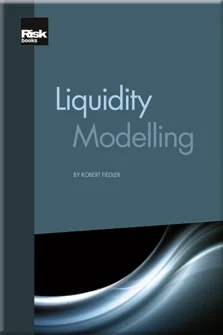A Template for an Illiquidity Risk Solution
Introduction to 'Liquidity Modelling'
Setting the Scene: Why Liquidity Is Important in a Bank
What Is Liquidity Risk?
Illiquidity Risk: The Foundations of Modelling
Capturing Uncertainties
A Template for an Illiquidity Risk Solution
The Counterbalancing Capacity
Intra-Day Liquidity Risk
Liquidity Transfer Pricing and Limits
The Basel III Banking Regulation
This chapter and the following one are based on solutions the author has developed and implemented in several banks. In the earlier chapters we have substantiated our approach to the problem and in Chapter 5 we have described how we want to measure liquidity risk, how we can forecast the bank’s future liquidity situation and what the bank could do in case the forecast was unfavourable. We dealt in principle with the logical interconnectedness between the different uncertainties, and the potentials ways to map them accordingly into the concept of optionality. Now we want to implement this.
In this chapter we first deal with scenarios and strategies as systematic assessments of possible future developments from the materialisation of the previously described optionality. Because scenarios by definition allow simulating “almost anything” in the future, it is essential to specify which scenarios should be created and how their results should be interpreted, especially if compared with other scenarios. We establish rules for the creation of scenarios like uniqueness and consistency of variables. In order to restrict calculation efforts, we systematise the driving factors of scenarios
Copyright Infopro Digital Limited. All rights reserved.
As outlined in our terms and conditions, https://www.infopro-digital.com/terms-and-conditions/subscriptions/ (point 2.4), printing is limited to a single copy.
If you would like to purchase additional rights please email info@risk.net
Copyright Infopro Digital Limited. All rights reserved.
You may share this content using our article tools. As outlined in our terms and conditions, https://www.infopro-digital.com/terms-and-conditions/subscriptions/ (clause 2.4), an Authorised User may only make one copy of the materials for their own personal use. You must also comply with the restrictions in clause 2.5.
If you would like to purchase additional rights please email info@risk.net











